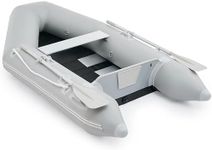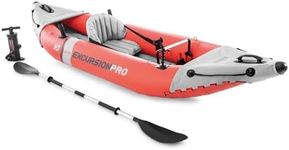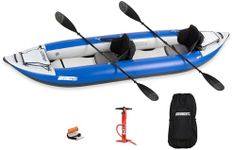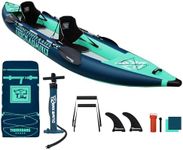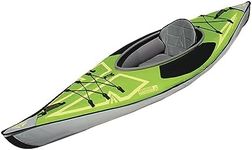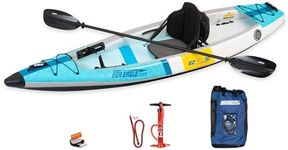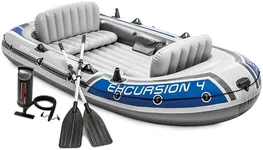Buying Guide for the Best Inflatable Kayaks
Choosing the right inflatable kayak can make your time on the water much more enjoyable and safe. Inflatable kayaks are popular because they are portable, easy to store, and generally lighter than hard-shell kayaks. When picking one, it's important to think about where and how you plan to use it, who will be using it, and what features matter most for your comfort and safety. Understanding the key specifications will help you find a kayak that fits your needs and gives you the best experience.Capacity (Number of Seats)Capacity refers to how many people the kayak is designed to hold. This is important because it affects both safety and comfort. Inflatable kayaks typically come in single, tandem (two-person), or sometimes even three-person versions. If you plan to paddle alone, a single-seater is usually lighter and easier to handle. For couples or friends, a tandem kayak is a better fit. If you want flexibility, some models can be adjusted for solo or tandem use. Think about who will usually join you on your trips to decide which capacity is best.
Weight LimitThe weight limit tells you the maximum combined weight the kayak can safely carry, including people and gear. This is crucial for safety and performance, as overloading can make the kayak unstable or cause it to sit too low in the water. Weight limits are usually divided into ranges: under 250 lbs for solo light use, 250-400 lbs for most single users with gear, and 400-600+ lbs for tandems or those carrying extra equipment. Add up your weight and any gear you plan to bring to make sure you choose a kayak with a suitable weight limit.
Material and DurabilityThe material of an inflatable kayak affects how tough and long-lasting it is. Most are made from PVC, vinyl, or reinforced fabric. Thicker, multi-layer materials are more resistant to punctures and abrasions, making them better for rougher waters or rocky shores. Lighter materials are easier to carry but may be less durable. If you plan to use your kayak in calm lakes, a lighter model may be fine. For rivers or coastal areas, look for reinforced or multi-layer construction for extra durability.
Length and WidthThe size of the kayak influences how it handles on the water. Longer kayaks (over 12 feet) tend to track straighter and move faster, making them better for longer trips or open water. Shorter kayaks (under 10 feet) are easier to turn and handle, which is great for beginners or narrow rivers. Width affects stability: wider kayaks are more stable and less likely to tip, while narrower ones are faster but may feel less steady. Consider your skill level and where you’ll paddle most often to choose the right size.
Setup and PortabilitySetup time and portability are about how easy it is to inflate, deflate, and carry the kayak. Some models have quick-inflate valves and come with pumps, making setup faster. Others may take longer or require more effort. Portability also depends on the packed size and weight—some kayaks fit into a backpack, while others are bulkier. If you need to carry your kayak a long distance or have limited storage space, look for a model that is lightweight and packs down small.
Tracking and Stability FeaturesTracking refers to how well the kayak goes straight, and stability is about how steady it feels on the water. Features like removable fins (skegs), rigid floors, or side chambers can improve both. If you’re new to kayaking or plan to use it in choppy water, look for models with extra stability features. For longer trips or open water, good tracking is important so you don’t have to constantly correct your direction.




